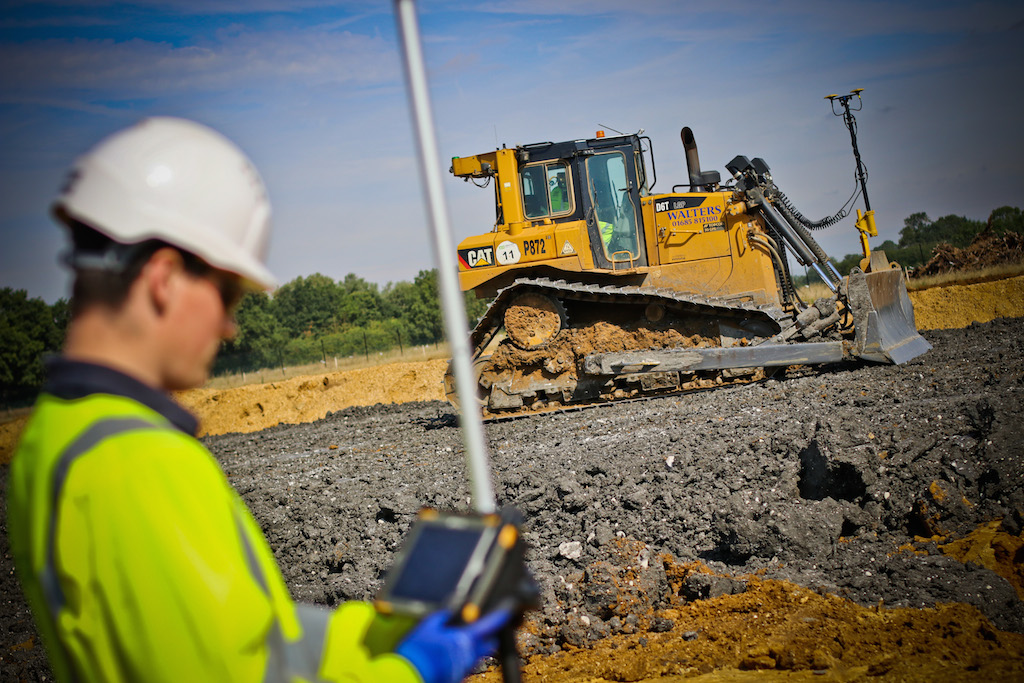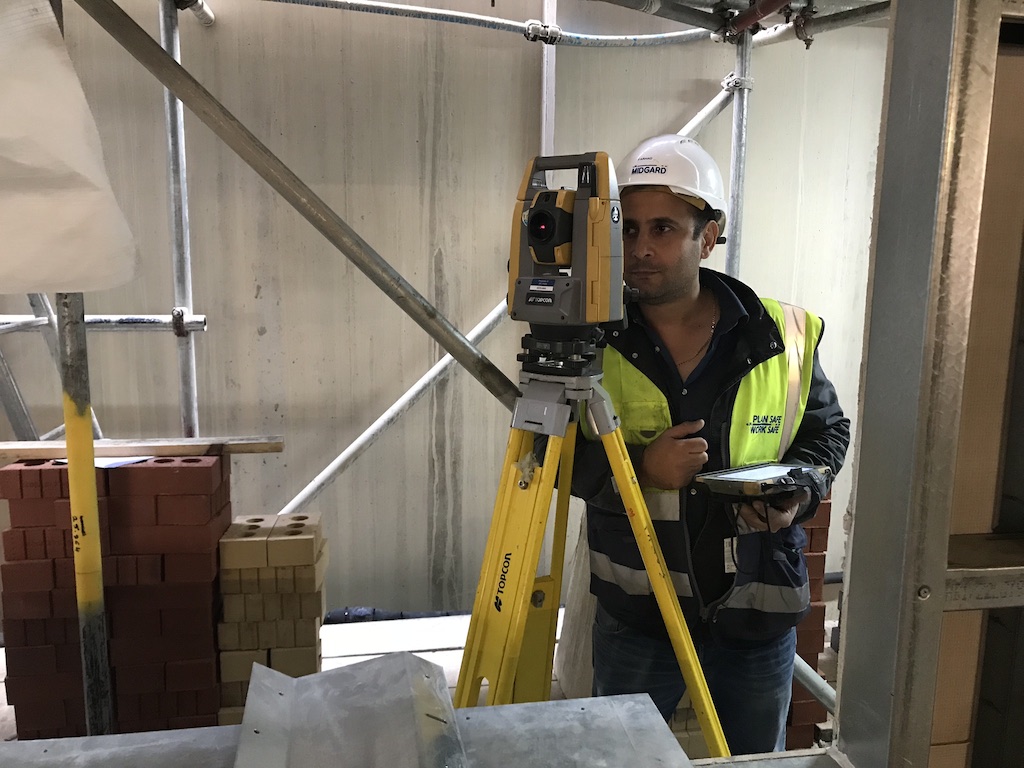 What will a construction site of 2050 look like? Andy McCann, strategic account and OEM manager for construction at Topcon Positioning GB provides his analysis.
What will a construction site of 2050 look like? Andy McCann, strategic account and OEM manager for construction at Topcon Positioning GB provides his analysis.
If we were to dream up the ideal construction site it would undoubtedly be one where staff were safe, works were efficient, completed on-time and on-budget, there would be no such thing as material waste and operations would be ultra clean – and green.
This is not an impossible reality. Data and technology are unlocking new, better and safer ways for the industry to operate, and with the momentum of digital adoption growing, the construction sites we see in 2050 could be the things we dream about today. Andy McCann, strategic account and OEM manager for construction at Topcon Positioning GB, discusses the construction technology that is transforming workflows and processes on site and in the office.
Safety first
Construction’s biggest problem is that there are people everywhere on sites that are constantly evolving at a rapid pace. We have people around heavy machinery and trenches, working at heights and with dangerous materials. Research suggests there are around 64,000 non-fatal injuries on UK construction sites every year, and between 2012 – 2017 there were 196 fatalities. Because of these startling figures, the biggest change we will see between now and 2050 will be the focus on improving site safety.
There are technologies available that are helping address this issue already. Take automation and intelligent machine control for example; automated processes are taking people away from the hazards of sites, improving project productivity by streamlining workflows where these professionals can put their skills to work in other areas that are neglected because of the current need for bodies on site.
We may not be able to remove all of the team from site, but there are also AR technologies, like Topcon’s MAGNET Vision glasses, that enable vastly improved situational awareness by keeping eyes up and hands free when using certain equipment. It’s technology like this that will be able to reduce the injury and fatality figures that urgently need addressing.

Efficiency today, tomorrow and beyond
When it comes to construction, all too often deadlines are missed, timelines are stretched and budgets are eaten up well before completion. Speed and accuracy don’t tend to go hand-in-hand without years of experience, skill and talent, but technology is making it easier. With the skills gap looming and the usual rotation of machine operation staff, certain technologies can make the job simpler and quicker to avoid delays when less-experienced operators are the only option, and help turn experienced team members into the best in the industry. It opens up a greater pool of staff while we work to inspire more youngsters into our sector.
Machine control technology, like Topcon’s new Automatic Excavator (X-53x), can quite literally enable a bucket to walk a tightrope, allow operators to check designs instantly and make complex excavation a walk in the park. Not only does this save time and money, upskill the workforce, provide accurate and quick results, but it also enables businesses to hit sustainability targets.
According to Low Carbon Construction, a report from the Cabinet Office Innovation & Growth Team in November 2010, operational energy in completed buildings accounts for 83 per cent of the 300 million tonnes of CO2 emissions in the industry’s control. Efficient use of plant can reduce these emissions, as well as reduce noise and water pollution, and we will most definitely see electric plant a more commonplace feature as we move forward to address the issue.
Technology that accurately measures and uses the necessary amount of material needed for a task will also become popular on sites as sustainability targets become more pressing. It’s likely that the materials themselves will be technologically advanced in 2050 – with self-healing concrete and asphalt already making waves in the industry.

The future is connected
The success of a project begins with inception and design. Data collection is critical to ensure accurate plans, which in turn ensure accurate works. While data capture is all well and good, it’s impossible for everyone to understand and stick to designs if data isn’t shared, updated and recirculated regularly. Technologies like Topcon’s SiteLink and Magnet Enterprise enable all members of the project – whether that be project managers, machine operatives or site engineers – to work from the same data and plans that are updated instantly. Innovations like these ensure accuracy at every stage.
As we tackle ageing infrastructure and plan more with less space, data capture is not only important for design and execution, but for ongoing management and future planning. At the moment, we have 99.5 per cent of the infrastructure we need in the UK, so focus will shift to how we make existing infrastructure perform better, and a digital representation of those sites, or a Digital Twin, will be critical in planning improvements.
There’s momentum behind digital adoption for construction, and there’s more backing from the UK Government than ever before. This speed will not slow, and every blue-chip now has someone at the helm of ‘Digital Transformation’ to drive the business into the next industrial revolution. To those who are still considering the worthiness of these technologies on their projects, my advice would be that you make sure you don’t get left behind.









